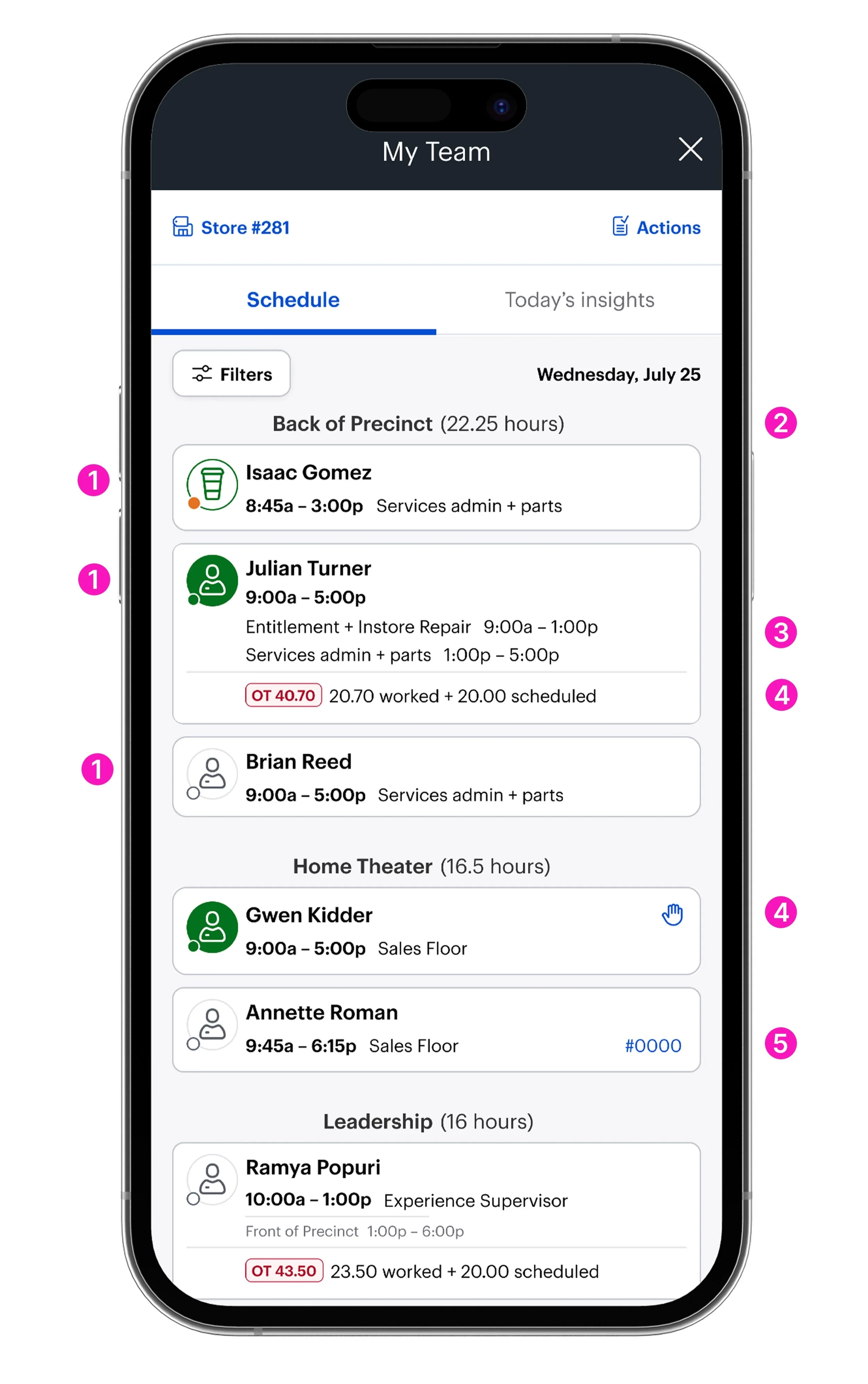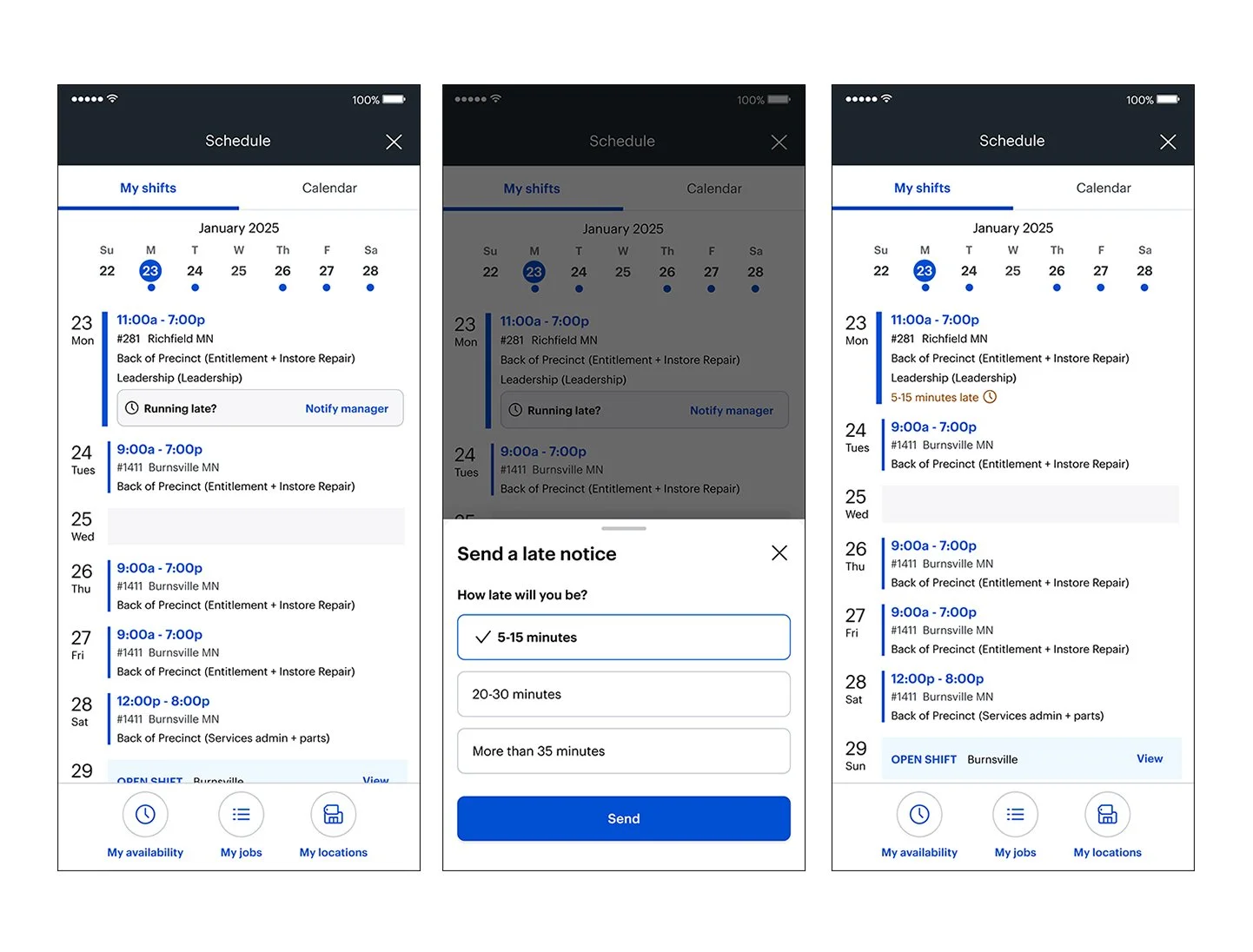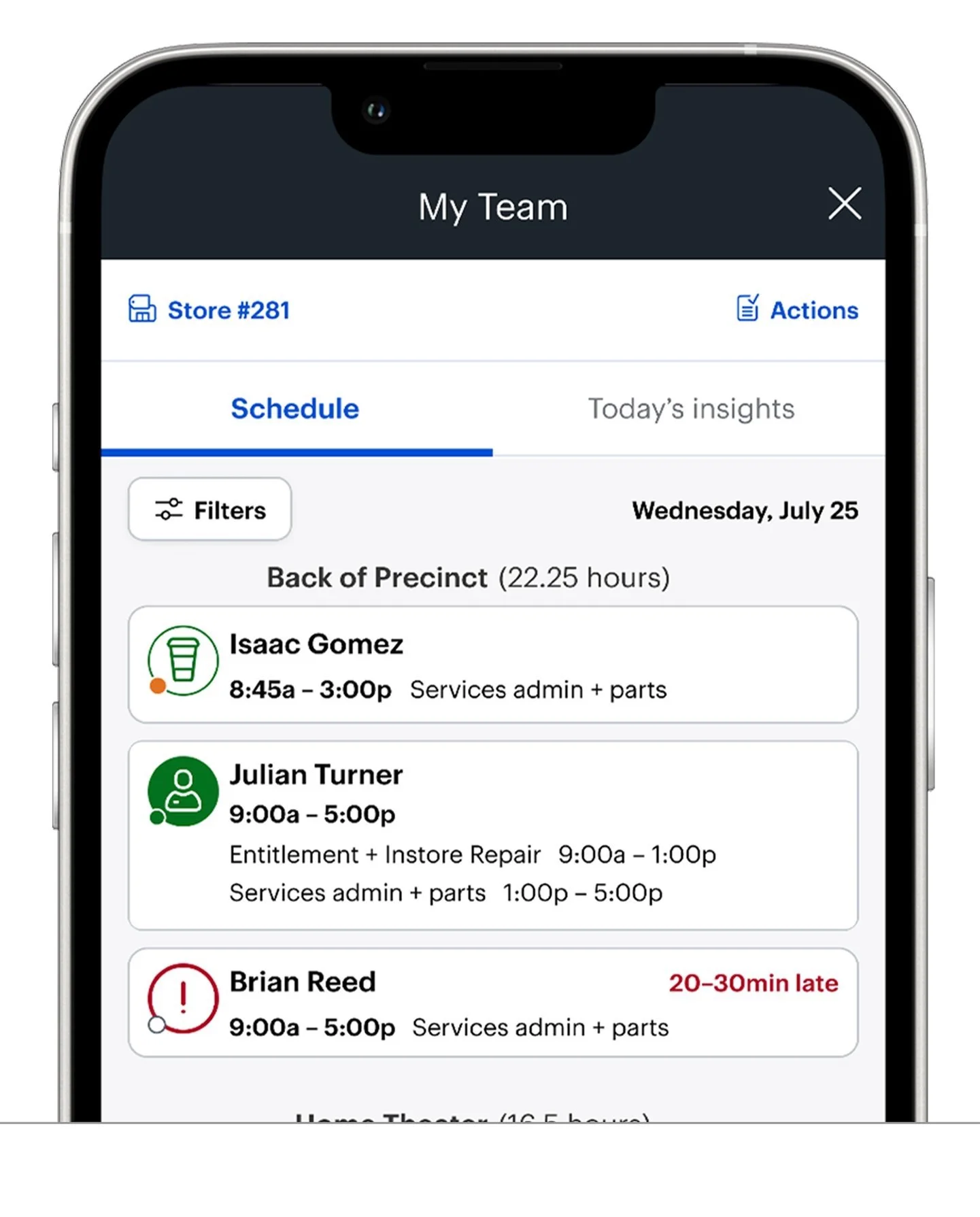A day in the life.
ROLE: UX/UI design | research
TEAMS: Workforce Management, Connect employee app & web
TOOLS: Figma, Miro, Teams
A General Manager at a Best Buy retail store is accountable for everything from revenue and profitability to recruiting and the development of their team. Depending on the season, each location can have anywhere from 20-100 employees. Currently, store managers don’t have a quick way to manage and address labor needs when they are on the sales floor.
ObjectiveS
Give managers the ability to see from the sales floor:
• Who is clocked in
• Who is scheduled today
• Does anyone have overtime
Challenges
The two primary sources where a manager finds this information are the Leadership Engagement app and TLC (Time Labor Center).
TLC is a desktop system used to track and submit time and it is also where leaders view reports and create and edit the store schedule. When a manager wants to look at the schedule, they have to step away from the floor and head to the back office because TLC is only available as a desktop system.
The Leadership app provides mobile access to do price overrides, manage in-store appointments and view some schedule information (dept/shift, clock status, OT alerts, call outs). A decision was made recently to phase out the Leadership app. TLC will now be the only way to view the store schedule and it is limited to desktop only access.
“We print off the schedule to put up front at check out, which we would continue to do, but if we could get it while we're on the floor–boom! Saves us from logging in.”
Solution: THE MY Team Tool
My Team is a new tool within the Employee app ecosystem that provides retail leaders with mobile access to daily schedules and insights. The real-time data enables leaders to make decisions quickly, and efficiently manage their workforce. My Team fills the gap left when the Leadership app is no longer available.
Because of the high adoption numbers, the product team identified the features that were valuable to retain from the Leadership app and adapt to the Schedule tab in My Team. I completed competitive analysis of calendars, schedules and filters. Retail leaders gave input on what info was priority to them. I ran a rapid iteration cycle, using surveys, wireframe discussions, and Teams polls to get quick feedback and make adjustments.
1 Improved accessibility - Employee clock status with color and icons showing on/off the clock and meal breaks
2 Departments - Employees are pre-filtered by department for easier scanning
3 Additional shift information - Now includes scheduled activities and times
4 Additional filters and labels - Open to Shorter Shift and Overtime alerts
5 Locations - An employee not working at their primary store is identified by their store number
“The more organization to the information being displayed, the easier the tool is to use quickly…this tracks with that.”
83% | 86K | 86
reduced time (checking schedule) ~ leader hours saved per year ~ hours saved per store
validation
To validate that overtime alerts were providing value, I reached out to the leaders in the markets that were piloting approaching overtime alerts in the Leadership app. 87% of those leaders said they paid attention when they saw alerts and said the alerts have influenced the way they manage schedules and overtime in their stores. “We use the alerts to coach in the moment, and monitor when we are on the floor.”
“It gives us a heads up without pulling the report.”
Leaders now have the ability to filter for OT alerts and see all alerts from their store at once.
$500K+ savings in overtime spending annually.
Real-time communication
14% of employee shifts have late arrivals. The call out feature was used 6000 times last year for running late messages. Employees that are running late will have a way to notify managers in the store and not interfere with call outs. This feature was one of the top three priorities for leaders.
“Our employees use the call out function to notify us if they are stuck in traffic or going to be late but it would be nice to have a different notification for that.”
Employee experience triggers the feature for managers.
Push notification
System Thinking: Notification Consistency
The schedule within the My Team tool was the first team to utilize push notifications and surface some of the issues. Addressing the cross-app UX consistency beyond the schedule and My Team was a broader challenge that required the collaboration of multiple product spaces. Solving for notifications in My Team contributed better patterns and consistency for the entire Connect ecosystem.
• Notification toggle- adapting a single-app experience to a multi-tool ecosystem
• After-tap behavior- avoid tossing users from app—establish the pattern for Connect
• Urgency levels- defining a tiered system for time-sensitive notifications
Up Next
Who’s not working - Labeling a shift as call out on the schedule was one of the top three features desired by leaders.
Access to the numbers - Initial recommendations on what numbers would be helpful for leaders were replacing the department hours with ‘Labor % to Issue’ and charts for the Insights tab.
Responsive view for tablet - A daily view for the tablet screen including ability to edit breaks.
![D'Lee [d'sign]](http://images.squarespace-cdn.com/content/v1/5e447fff1e44fb65ca633712/1612633741972-78L1O3MXYXN9DDAWTRU7/dlee_dsign.png)








